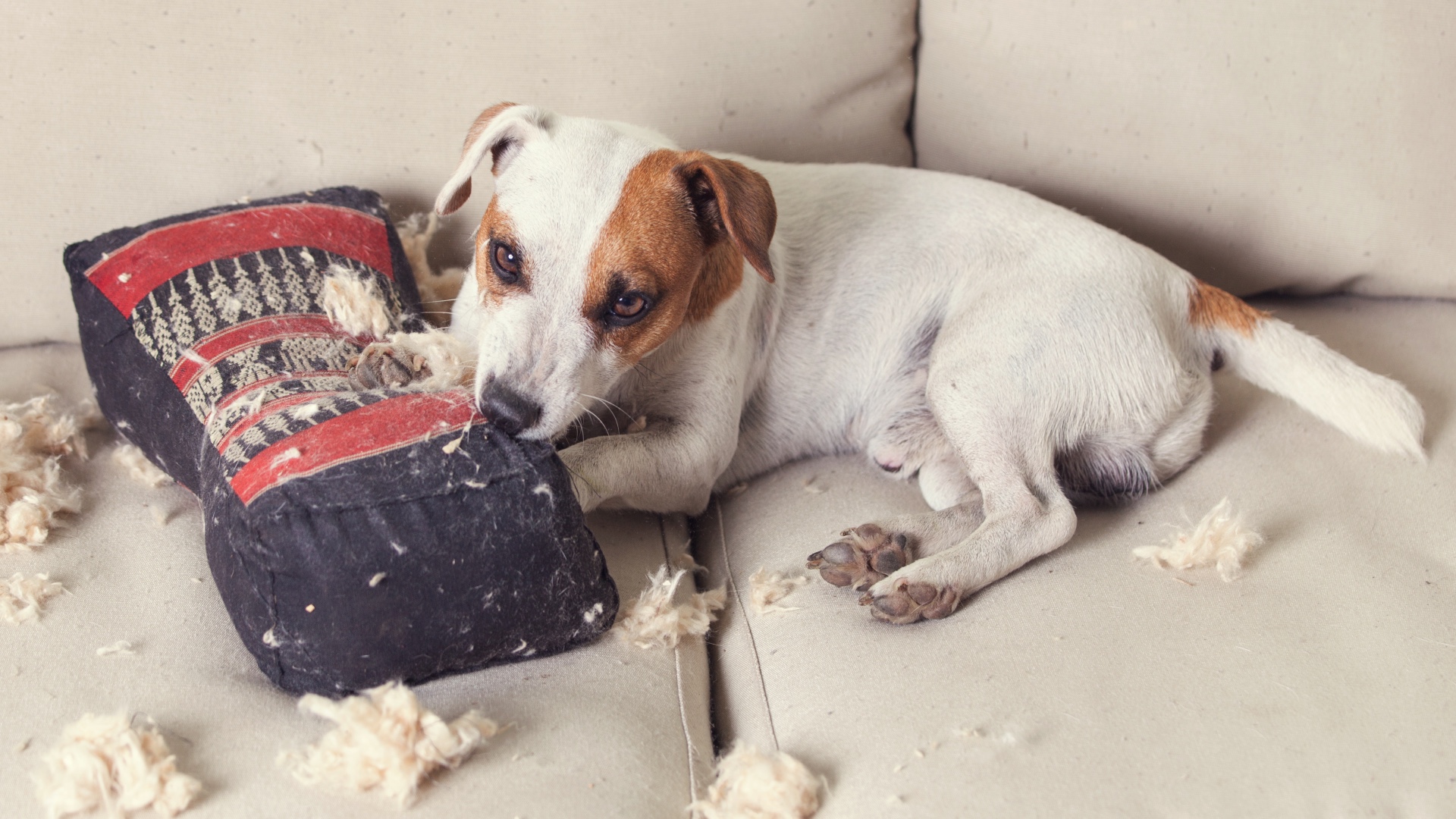
Disclaimer: Unless specifically stated, any expert comments quoted in this news piece have been taken directly from the Instagram post cited below.
Ahh the teenage years — who knew that this tricky stage isn't just reserved for our children but can affect our dogs as well!
As our canine companions leave puppyhood and begin to enter adolescence, many pet parents are desperately trying to figure out how to deal with a badly behaved dog.
But, according to expert trainer Carolyn, founder of Good Dog Training, there are tons of behaviors that while challenging, are very normal for adolescent dogs to display.
Here are six of the most common...
1. Bucket loads of energy: "Adolescent dogs have so much more energy than puppies," says Carolyn. "They're sleeping less and moving more, developing adult coordination and stamina.
"If they're awake, they're probably getting into trouble. They will need much more exercise and mental stimulation than they did previously."
2. An increase in barking and vocalization: "They're finding their adult voices, and many adolescent dogs get sassy and will backtalk," explains Carolyn, who goes on to say that other dogs may become reactive or alarm bark at certain things.
3. Reactive behaviors may emerge: Carolyn says that adolescence is typically when you'll see reactive behaviors begin to surface. "Younger puppies may be more fearful and avoidant while dogs become more barky and aggressive.
"Some adolescents are sporadically reactive to random things, like a bush, rock, or a bird overhead. Reactivity may be intermittent and vary from day to day or be consistent."
4. More independent: "Adolescent dogs are often far more independent than they were as puppies, feeling far more confident being away from you now that they're older," Carolyn explains.
"This is often the age where recalls fall apart, and puppies who used to be reliable off leash may now need to be back on leash for a bit."
5. A decrease in obedience: Carolyn says that it's very common to see decreased obedience in adolescence, with many dogs appearing to forget that they were ever trained in the first place.
"Research actually backs this up, finding that adolescent dogs are less obedient to their owners during this time."
6. Chewing everything in sight: "You might think that once those puppy teeth are out, you're done with chewing and biting. Nope! Unfortunately, there's often a resurgence of these behaviors in adolescence as our pups break in their new adult teeth."
In order to make the best of adolescence, Carolyn recommends offering up plenty of exercise, lots of chews, training, and mental enrichment in the form of nose work, puzzle games, and going new places.
Above all else, she says it's important to be patient as your dog is doing their best.
"Remember, adolescence is a normal part of development, and it will end."







